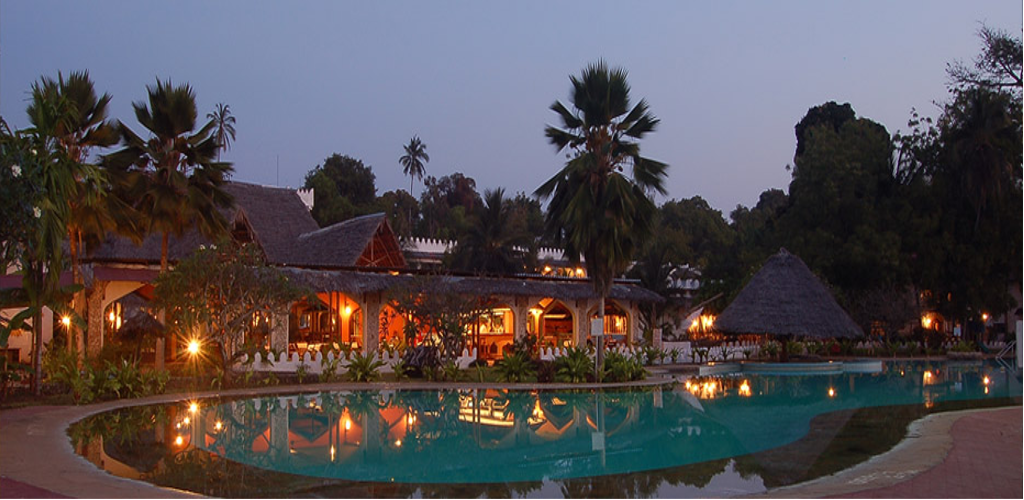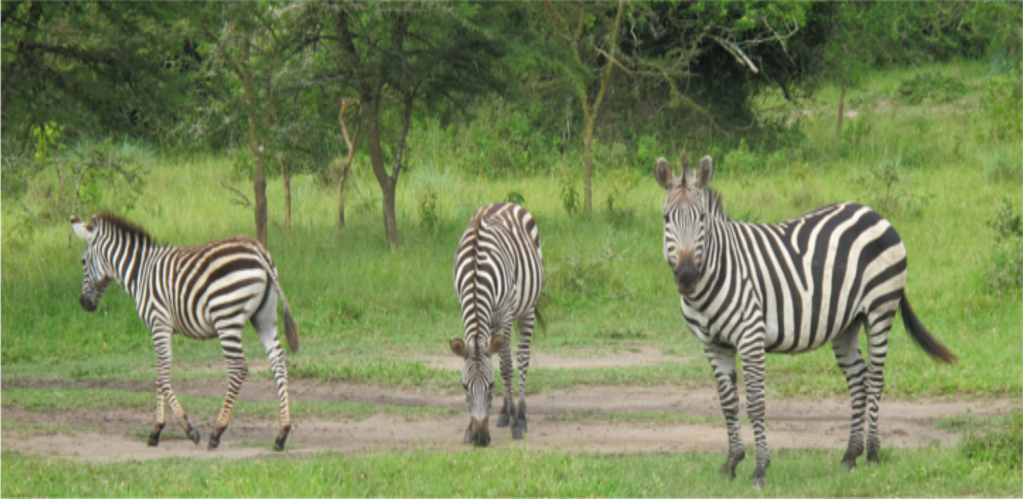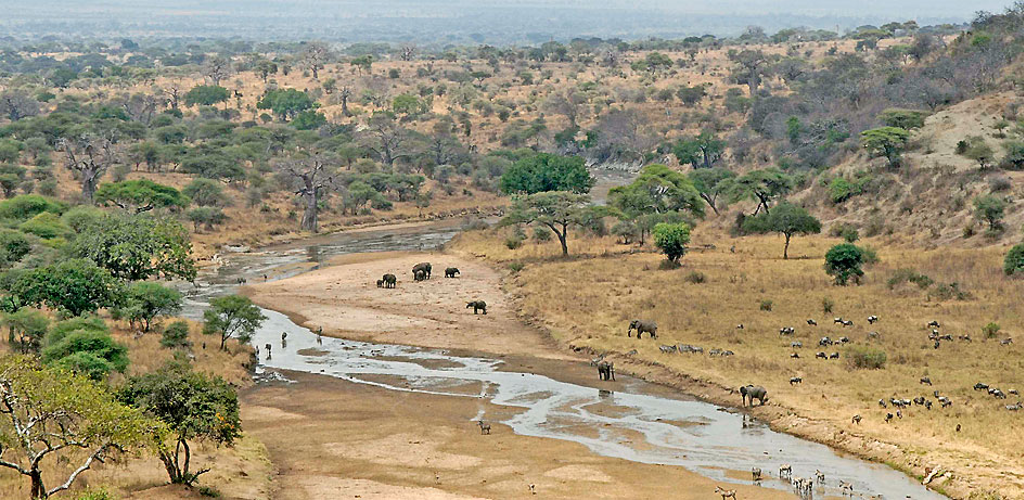Travel information to Uganda
Facts about Uganda
Uganda is a landlocked country located west of Kenya and is slightly smaller than the state of Oregon. Uganda’s climate is tropical; generally rainy with two dry seasons (December to February, June to August); semiarid in the northeast. Its lowest point is Lake Albert at 621 m and its highest point is Margherita Peak on Mount Stanley at 5,110 m. The population of Uganda is approximately 30million and the capital is Kampala. English is the official national language, taught in grade schools, used in courts of law and by most newspapers and some radio broadcasts. Bwindi, in southwest Uganda, is home to half the world’s remaining Mountain Gorilla population.
Travel Documents
Clients require a valid passport and visa to enter Kenya, Uganda and Tanzania.
Please make sure that your passport is valid for six months from the date of your safari and that it has a sufficient number of unused pages for endorsements. We suggest that you take two photocopies of the information page of your passport and keep one in a separate part of your luggage and give the other to our East African partners during your orientation meeting upon arrival in East Africa. We also recommend leaving a copy with your contact person at home. If you lose your passport, this will make it easier to replace.
Please do not leave your passport or any other valuables in hotel rooms or unsupervised vehicles, planes, etc., while you are on safari.
Visas
Uganda government effective July 2016 introduced online visas, anyone arriving into Uganda who requires an entry visa must have applied through the online application system prior to arrival. Visit https://visas.immigration.go.ug *
Procedure; Go to the visa immigration website https://visas.immigration.go.ug
Complete the application form and upload clear copies of current passport, Yellow fever certificate and a passport photo.
On completion of the online application, you will receive a bar-coded email notification. Print out the email and bring it with you to Uganda. Upon arrival at the point of entry, present the bar-coded email to the immigration officer who will scan the barcode; take your finger prints and photo.
The visa sticker will be printed with your photo and embedded in your passport (passport must be valid at least 6 months).
Health Requirements
You should consult your physician regarding the best choice of vaccines for your trip. Recommendations will depend on many individual factors, including your precise travel plans. It is recommended that you see your doctor at least four to six weeks before your trip to allow time for vaccines to take effect.
YELLOW FEVER – Due to reported cases of Yellow Fever in other parts of Africa, all visitors arriving in Uganda are required to present a valid Yellow Fever card upon arrival.
Travelers to East Africa intend or endemic areas are strongly advised to protect themselves with vaccination against Yellow Fever at least two weeks prior to their departure from their own home countries. If traveling to Uganda, it is highly recommended that you be inoculated against Yellow Fever as the country has a tropical climate and is considered a Yellow Fever risk area.
A travel clinic directory is available through The International Society of Travel Medicine: http://www.istm.org/
Travel and Medical Insurance
We strongly recommend that you make arrangements for comprehensive travel and medical insurance services.
We recommend that you visit www.insuremytrip.com, where you will be able to compare policies and information from 18 leading companies.
Most policies offer Trip Cancellation, Baggage, Medical, Dental, Emergency Evacuation, 24 Hour Traveler Assistance, Baggage Delay, Travel Delay, and Accidental Death Coverages. Some policies also have options for Collision/Damage coverage for rented cars, Flight Insurance (a form of Accidental Death Coverage while flying only) and added Emergency Evacuation insurance. Some package policies include coverage for children at no extra charge.
Although every possible care is taken to safeguard you and your property while on safari with us, we accept no liability to clients for any accidents, injuries, or illnesses incurred or for any loss of, or damage to, client property.
Currency and Currency Exchange
The currency in Uganda is the Uganda shilling. The exchange offices in the airports and border crossings have up-to-date exchange rates for all major world currencies, including U.S. dollars. Most hotels will exchange your currency at moderate premiums, but usually at lower rates than the banks. Major credit cards are accepted in East Africa at larger hotels and in some shops in the main cities.
For Uganda: We suggest that you take cash in US$ in $100 or $50. Notes must be dated 2013 or newer and must be in good condition, not torn, etc., or banks will refuse them. Traveler’s cheques are not popular and will receive a very low rate of exchange. Additionally, it will be difficult, if not impossible, to change traveler’s cheques outside of the large cities.
PLEASE NOTE:
a) It is illegal to exchange money with anyone but a licensed money-changer.
b) It is an offen
Your Safari Driver/Guide
A skillful, committed and willing driver/guide can add much to your safari.
Your driver/guide has experience both in driving off road and with wildlife. He may be able to spot animals that you cannot see due to his familiarity with the area and animal behaviors. Feel free to ask questions.
Tipping
In general, at hotels, lodges, restaurants, etc., a 10% tip is the norm. This assumes that you received service that you consider to be good/friendly/pleasant. If you did not receive good service, then there is no point in tipping. If you received service that you consider goes beyond that which you would normally expect, then you should tip accordingly. A waiter or porter normally earns between $4 and $8 per day, depending upon the establishment (small café or big hotel), so tips in excess of a day’s wage are exceptional, unless they are being shared.
On safaris, it is common practice to tip drivers, guides, porters and other staff if service has been good. Some recommendations for tipping:
Driver/guides: $10 per client per day
Camps and lodges: $5 per client per night
Gorilla trekking guides: $15 per client per trek
Gorilla trekking porters: $15 per client per trek
National park naturalists: $10 per client per walk
It is difficult for locals who receive tips in small denominations of US currency to convert to the local currency. It is best to change money into the local currency and obtain small bills. Tipping with the local currency provides the recipients with the most value from your tips. Please do not tip in US$ coins as they cannot be exchanged.
Electricity
Electric current is 220-240-volt AC 50 Hz. Power sockets are usually of the three-square-pin variety as used in the UK, although some older buildings have two-round-pin sockets. Bring a universal adaptor with you.
Some lodges do not have electricity 24 hours a day. Generators supply the electricity and often the sleeping rooms have very few electrical outlets. You should also bring a device that allows you to plug in more than one item to one outlet to allow you to charge multiple batteries and a computer at the same time.
Some vehicles have outlets for charging batteries during your game drives, but some do not. Ask your safari driver/guide.
Time Zones
Kenya, Tanzania and Uganda are eight hours ahead of Washington, DC, Eastern Standard Time. The daylight hours are from approximately 06:15 to 18:30. East Africa does not change its clock for Daylight Savings Time.
Climate
The climate of East Africa varies with each region because of the varied topography. Broadly speaking, the climate is hot and humid at the coast and becomes less humid as you move inland. The heat is moderated largely by altitude, therefore the cooler areas are found in the highlands. Most of the areas frequented on normal wildlife safaris are in areas of moderate climate. In general, the coolest months are from June to October and the warmest from December to March. Rainfall generally comes in two seasons, the ‘long rains’ from mid-March through May, and the ‘short rains’ during November and the first half of December. Again, there will be slight regional variations. Rainfall varies from less than 10 inches per year in the semi-arid areas of Kenya’s northeast to about 60 inches along the coast and over 120 inches in the mountainous rainforest areas, such as Uganda’s southwest.
Food and Drink
Generally, it is advisable not to drink or brush your teeth with tap water in East Africa. Bottled water is always available.
The food served at most lodges is of the highest quality. Gourmet cooks bake fresh breads and produce soups, salads, and entrees that could easily appear on tables at top restaurants around the world. Meals are international in flavor with soups, salads, pasta dishes, meat and fish dishes, and breads.
Normally, your wake up calls will be accompanied by tea or coffee and cookies before your morning game drive or bush walk. Returning to camp late morning, brunch is served with fresh fruit, cereals, bacon, eggs, sausage and toast.
Otherwise, lunch is usually a warm dish served with salads, quiches, and cold meats.
Dinner consists of an appetizer and soup, followed by meat, fish and pasta dishes served with fresh vegetables and sauces. Dinner is followed by tea or coffee and dessert.
We are happy to accommodate special diets and appreciate knowing about them in advance.
Personal Health
Please ensure that you bring sufficient quantities of any toiletries or medications you require. Consult your doctor before departing so that he/she knows the conditions under which you will be taking medication. Please advise us of any side effects of any medication you take and of any dietary requirements related to taking them.
Some suggested items:
- Anti-malaria pills
- General antibiotic treatment
- Antacid tablets/anti-diarrhea/indigestion preparations
- Cold & flu medication
- Aspirin/Tylenol or equivalent
- Antiseptic solution
- Band-aids
- Insect repellant
- Sunscreen
- Calamine lotion/Bactine for insect bites or sunburn
Luggage
Travel light – remember, if you can’t carry your own bag, it’s too heavy! One strong, medium-sized duffle bag or medium suitcase (that you can carry) and a daypack should be adequate. 20 kg is the maximum allowable baggage weight for international flights, 15 kg on internal scheduled flights, and 10 kg on charter flights.
The overweight rules and their enforcement vary from airline to airline. Some airlines do not charge anything as long as each piece of checked luggage is less than the maximum. Others charge as much as US$ 5.00 per kilo of overweight.
Carry-on Baggage
We suggest you carry the following items with you on the plane in your daypack or carry-on bag: gorilla/chimp trekking footwear mentioned in the parking information below, camera, binoculars, important documents, and other irreplaceable items. It is also a good idea to pack a change of clothes and your toothbrush in your carry-on…just in case. It is crucial that you pack any essential medication in your carry-on in sufficient quantities to last for at least a few days after the scheduled end of your trip.
Storage of Gear
Excess baggage may be stored at the hotel in Entebbe / Kampala while you are on safari in Uganda. Please remember to clearly label any bags you are leaving there. Valuables should be left at the reception desk in a safety deposit box and not in your main luggage.
Packing Information
Clothing
The dress for our safaris is informal; therefore lightweight, casual clothes are appropriate. Safari clothing should be neutral in color (tan, brown, khaki, light green). This list is intended merely as a guideline, so you should use your own judgment and experience in packing.
Shirts: Cotton, short-sleeved or T-shirts, long-sleeved, if you are sensitive to the sun.
Trousers: Shorts may be worn in some places. However, long, cotton field pants are advisable in some of the areas in which we will be walking.
Hat: A wide-brimmed or peaked hat for sun protection.
Sweater: Light sweater, jacket or sweatshirt for cooler evenings. It cools off quite drastically in the higher elevations.
Bathing suit: Some of the hotels or lodges will have pools.
Raingear: Poncho or raincoat just in case, especially if gorilla trekking is on your itinerary.
Shoes and socks: Trail shoes or running shoes with a good solid grip and good support and cotton socks are the most versatile and comfortable footwear for this trip. Some people prefer their well broken-in hiking boots. You can also put in some gardening gloves for gorilla trekking.
Accessories
Daypack: Bring a small backpack to carry bottled water, extra socks, moist travel wipes or sanitizing hand lotion, field guides, film, and your personal items.
Flashlight: Bring a strong flashlight (and extra batteries) in case we go on a night walk or power failures.
Binoculars: Binoculars are an essential piece of equipment on safari.
Miscellaneous: Personal soap, extra pair of prescription glasses, pocket calculator, travel alarm clock, laundry soap (for washing delicates), large zip-lock bags for damp laundry, and paperback books if you are a reader.
Note: We recommend that you put any sharp objects such as nail files, Swiss army knife, scissors, etc. in your checked luggage or they will be confiscated by airport authorities at check-in.
Equipment
If you are taking expensive camera, video, or sound equipment with you, we suggest that you make a list of the items, including description, serial and model numbers and bring one copy with you.
We are not responsible for the loss or theft of any personal articles such as cameras, binoculars or other valuables while you are on safari. Therefore, we strongly urge you to check your household or personal insurance policies to ensure that all the valuable articles you may take with you are insured to the level of your personal requirements.
Photography
A photo safari is a special experience. Long days, many animals, changing weather, variable geography and differing environments all offer excellent opportunities for outstanding photography. While the equipment and techniques are important, it is the photographer who creates the images.
The following information may help you get the best from your trip.
Our safari vehicles are four wheel drive Land Cruisers or Mini-buses. They have both sides and a roof, as distinguished from the vehicles in southern Africa, which have neither. The roof rises up several feet to allow passengers to stand and photograph 360 degrees unobstructed by windows and the like.
Under most conditions, you will not be able to safely get out of the safari vehicle during game drives.
Many photographers prefer early morning and evening game drives rather than those in the middle of the day. These are possible only if you will return to the same lodge. When planning your itinerary, you’ll need to consider how many early/late drives you prefer. Some adjustments may be possible if made well in advance of your arrival date.
On those days when you are driving from one lodge to another, a boxed lunch can be arranged.
Vehicles are not allowed off road in national parks and reserves. There are numerous tracks for vehicles in the parks, and few, if any, paved roads. However, in areas outside the parks, vehicles can go off road and depart from the tracks. Photographers often want to photograph an animal from a particular angle, which may not be possible if you are in a national park as the vehicles are not allowed to go off road.
Please note that when photographing gorillas and chimpanzees, no flash is allowed.
Camera Gear
The most important equipment is the fastest long lens you can afford. Nothing better captures an animal or a bird in low light. Weight is not a big problem because you will be in a safari vehicle, although weight may be an issue with airlines. You should bring a wider lens as well.
The Nikon DX format cameras, or equal from other manufacturers, are helpful because the sensor effectively extends the lens length by about 1.5 times. Cameras that do well with high ISO are very useful in low light situations. If you have a lens such as a 400mm or similar, you will be well served by having a second camera body with a shorter lens, such as a 70-200, or even wider to minimize changing lenses at critical moments. Sometimes, a long lens reduces the image too much. While you will see many birds where a long lens is essential, you will also see herds of elephant and will need something wider.
You will be safe if you bring three batteries per camera body. You will be using one with a second in reserve while the third is charging. If you are using two bodies, five batteries will be adequate.
A bean bag is the most inexpensive and easily used camera support in safari vehicles. Bean bags can be placed on the edge of the vehicle while you are standing. Kinesis offers a pre filled bag weighing about one pound. There are a myriad of specialized support devices at substantial prices that will mount your camera and lens on the vehicle in various ways. Really Right Stuff makes a great variety of such devices.
A laptop computer is a must if the main purpose of your trip is photography. Check your laptop battery before departure to make sure it provides power for an adequate length of time. Make sure you have at least one card reader. You need to bring memory cards with sufficient capacity. You may find that it is most convenient to have a card with sufficient capacity so that you do not have to change cards during your game drives. There may be times when you will shoot in burst mode. Try to bring cards that can accept data at the fastest possible rate.
Neither a tripod nor a monopod is useful in safari vehicles because there is not enough space. The only use for a tripod on safari is when shooting outside the vehicle.
A good pair of binoculars can be very helpful. Many animals are colored to make them difficult to see. Others may be at a distance. It is much easier to scan an area with binoculars than with a long lens.
Miscellaneous
Under no circumstances, please do not give anything - including candies, pens, empty water bottles, or money to children as this teaches them to beg. We prefer you to arrange donations through local leaders or teachers instead and would be happy to help with arrangements in advance.
The roads in East Africa are generally bad to very bad. Consequently, driving times may be long. For example, in Uganda, the drive from Entebbe to Bwindi may be up to 10 hours.
While on safari, you will find local people in East Africa to be extremely friendly and welcoming. However, before taking photographs of members of the local community it is asked that you please get their permission first. Your driver/guide will be able to help you with this if needed. Please do not give money in exchange for photographs. If you wish to send copies of photographs back to East Africa, we will make sure they are given out the next time our driver/guide is in that location.





